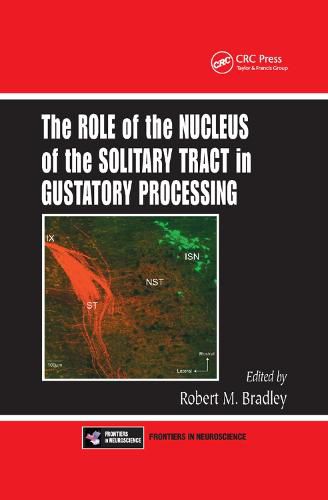Readings Newsletter
Become a Readings Member to make your shopping experience even easier.
Sign in or sign up for free!
You’re not far away from qualifying for FREE standard shipping within Australia
You’ve qualified for FREE standard shipping within Australia
The cart is loading…






Providing an essential brainstem relay for three cranial nerves, the NST coordinates highly complex sensory information. While other functions of the NST have received attention, its role in gustatory processing has received little. The first reference devoted exclusively to gustatory processing, The Role of the Nucleus of the Solitary Tract in Gustatory Processing offers an in-depth review of one of the most important central relay stations in the brain.
Combining widely dispersed research into a comprehensive single volume, it presents a thorough historical background, documents the anatomy of the rostral nucleus of the solitary tract (rNST), and explores the properties of synaptic transmitters and neurons within that tract. The book examines the role of reflex activities and considers factors that influence how gustatory rNST neurons respond to taste stimuli. It describes the development and maturational changes the rNST undergoes and considers the challenge involved with identifying rNST neural circuits.
The Role of the Nucleus of the Solitary Tract in Gustatory Processing brings together expert investigators who have contributed substantially to the current knowledge of the anatomy, physiology, and developmental biology of the solitary nucleus. This pertinent work serves as a standard reference for those involved in the field, providing ready access to past investigations and inviting practitioners to create new approaches that will advance knowledge about the central processing of gustatory information.
$9.00 standard shipping within Australia
FREE standard shipping within Australia for orders over $100.00
Express & International shipping calculated at checkout
Providing an essential brainstem relay for three cranial nerves, the NST coordinates highly complex sensory information. While other functions of the NST have received attention, its role in gustatory processing has received little. The first reference devoted exclusively to gustatory processing, The Role of the Nucleus of the Solitary Tract in Gustatory Processing offers an in-depth review of one of the most important central relay stations in the brain.
Combining widely dispersed research into a comprehensive single volume, it presents a thorough historical background, documents the anatomy of the rostral nucleus of the solitary tract (rNST), and explores the properties of synaptic transmitters and neurons within that tract. The book examines the role of reflex activities and considers factors that influence how gustatory rNST neurons respond to taste stimuli. It describes the development and maturational changes the rNST undergoes and considers the challenge involved with identifying rNST neural circuits.
The Role of the Nucleus of the Solitary Tract in Gustatory Processing brings together expert investigators who have contributed substantially to the current knowledge of the anatomy, physiology, and developmental biology of the solitary nucleus. This pertinent work serves as a standard reference for those involved in the field, providing ready access to past investigations and inviting practitioners to create new approaches that will advance knowledge about the central processing of gustatory information.